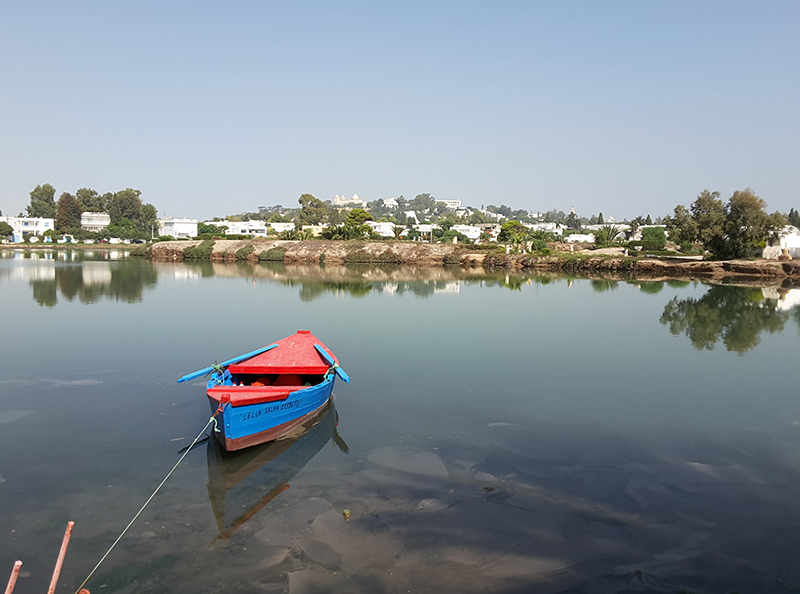Heinrich Schliemann a Tunisi e Cartagine. I diari
Abstract
Nel 1864 Heinrich Schliemann, il futuro scopritore di Troia, trascorse sei giorni a Tunisi. Ne riferisce nei suoi diari, scritti in parte in italiano ed in parte in arabo, qui tradotti per la prima volta. Ebbe così occasione di parlare con il primo ministro Khaznadar e di vedere nel palazzo del Bardo il sovrano Sadok Bey nelle sue funzioni di giudice di pace. Ci rende così testimonianza delle gravi turbolenze che stavano agitando il paese. Andò anche a Cartagine, visitando la collina della Byrsa, il porto, il quartiere litoraneo di Magon, l’anfiteatro e le cisterne de la M’alga e di Dar Saniat, comprando a poco prezzo da alcuni scavatori un’iscrizione su pietra.Riferimenti bibliografici
Baedeker K. (1911), La Méditerranée. Manuel pour voyageurs, Leipzig.
Baklouti H. (2019), Meravigliosa Cartagine grazie all’acqua potabile!, Archeologia Viva n. 197 (Sett/Ott), 22-31 (con la collaborazione di U. Pappalardo).
Baklouti H. (2019), Recherches archéologiques récentes sur un ensemble hydraulique antique mo-numental dans la zone de La M’alga à Carthage. Plan d’ensemble et architecture, CaSteR 4, 1-34 (doi: 10.13125/caster/3854, http://ojs.unica.it/index.php/caster/ )
Catalogo della Detroit Photographic Company “Regards sur l’architecture et la population de Tuni-sie”.
d’Erlanger F.R. et al. (1930-1959), La musique arabe, vol. 1-6, Paris.
de Maupassant G. (1890), La vie errante, Paris.
Easton D.F. (1982), The Schliemann Papers, The Annual of the British School at Athens (= BSA) 77, 1982, 93-110.
Ganiage J. (1959), Les origines du Protectorat français en Tunisie 1861-1881, Paris (ristampa: Tu-nis 1968).
Hentati M. (2019), Ennejma Ezzahra. Treasures Unveiled, Sidi Bou Said (Ennejma Ezzahra).
Hurst H. (1992), L’îlot de l’amirauté, le port circulaire et l’avenue Bourguiba, in Pour sauver Car-thage. Exploration et conservation de la cité punique, romaine et byzantine, Paris-Tunis (Unesco-INAA), 79-94.
Meyer E. (1953), Heinrich Schliemann. Briefwechsel. Aus dem Nachlass in Auswahl, vol. 1: von 1842 bis 1875, Berlin.
Meyer E. (1969), Heinrich Schliemann. Kaufmann und Forscher, Göttingen 1969, pp. 85-87.
Pappalardo U. (2020), La cultura classica in Giappone, Cronache Ercolanesi 50, (in stampa).
Pellegrin A. (1975), Histoire de la Tunisie, Tunis (Bouslama).
Rakob F. (1979), L’aqueduc de Carthage, Dossiers d’Archéologie 38, 34-42
Renault J. (1912), Les bassins du trik Dar-Saniat à Carthage, Revue Tunisienne , pp. 346-368, 471-498 e 543-559.
Revault J. (1974), Palais et résidences d’été de la région de Tunis. XVIe-XIXe siècles, Coll. Études d’Antiquités Africaines, Paris (CNRS) 1974.
Saladin H. (1908), Tunis et Kairouan. Collection Les Villes d’Art célèbres, Paris (Henri Laurens) .
Schliemann H., Schliemann S. (1892), Heinrich Schliemann‘s Selbstbiographie, Leipzig.
Traill D.A. (1991-1992), Schliemann’s Trips 1841-1867 and a Detailed Record of his Movements 1868-1890, Boreas 14, 207-214.
Copyright (c) 2020 Umberto Pappalardo, Ezzazia Souilmi

Questo lavoro è fornito con la licenza Creative Commons Attribuzione - Non opere derivate 4.0 Internazionale.
Gli autori che pubblicano su questa rivista accettano le seguenti condizioni:
Gli autori mantengono i diritti sulla loro opera e cedono alla rivista il diritto di prima pubblicazione dell'opera, contemporaneamente licenziata sotto una Licenza Creative Commons - Attribuzione - Non opere derivate 4.0 Internazionale che permette ad altri di condividere l'opera indicando la paternità intellettuale e la prima pubblicazione su questa rivista.
Gli autori possono aderire ad altri accordi di licenza non esclusiva per la distribuzione della versione dell'opera pubblicata (es. depositarla in un archivio istituzionale o pubblicarla in una monografia), a patto di indicare che la prima pubblicazione è avvenuta su questa rivista.
Gli autori possono diffondere la loro opera online (es. in repository istituzionali o nel loro sito web) prima e durante il processo di submission, poiché può portare a scambi produttivi e aumentare le citazioni dell'opera pubblicata (Vedi The Effect of Open Access).








